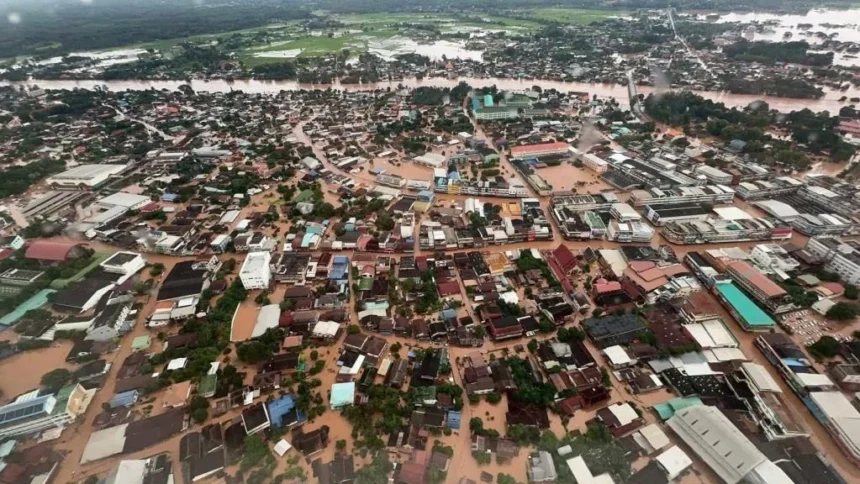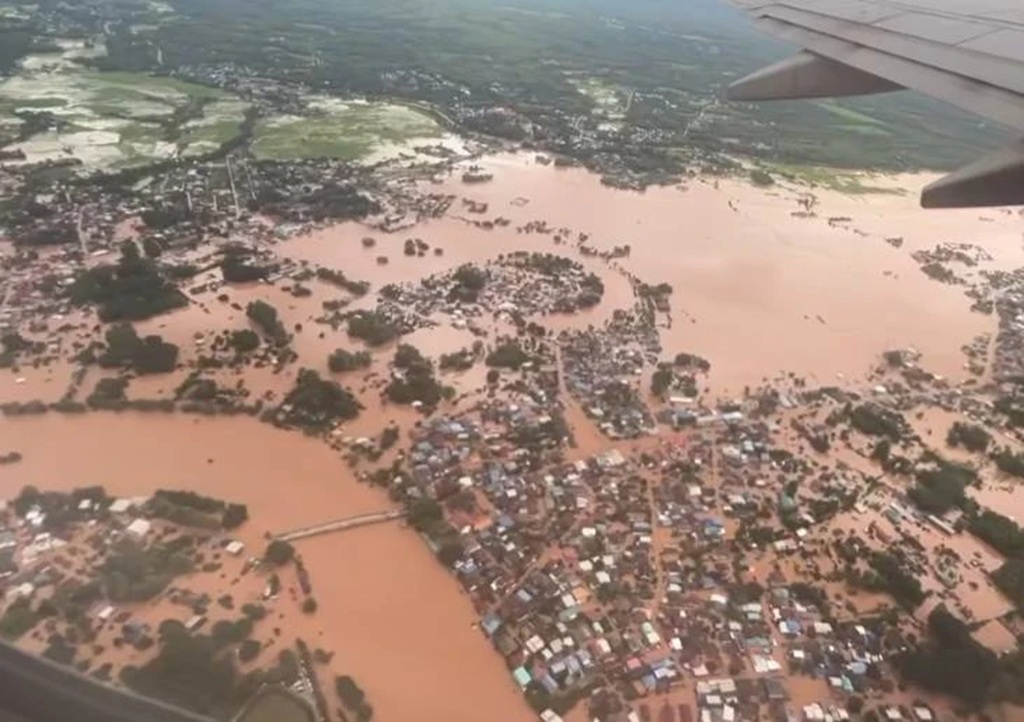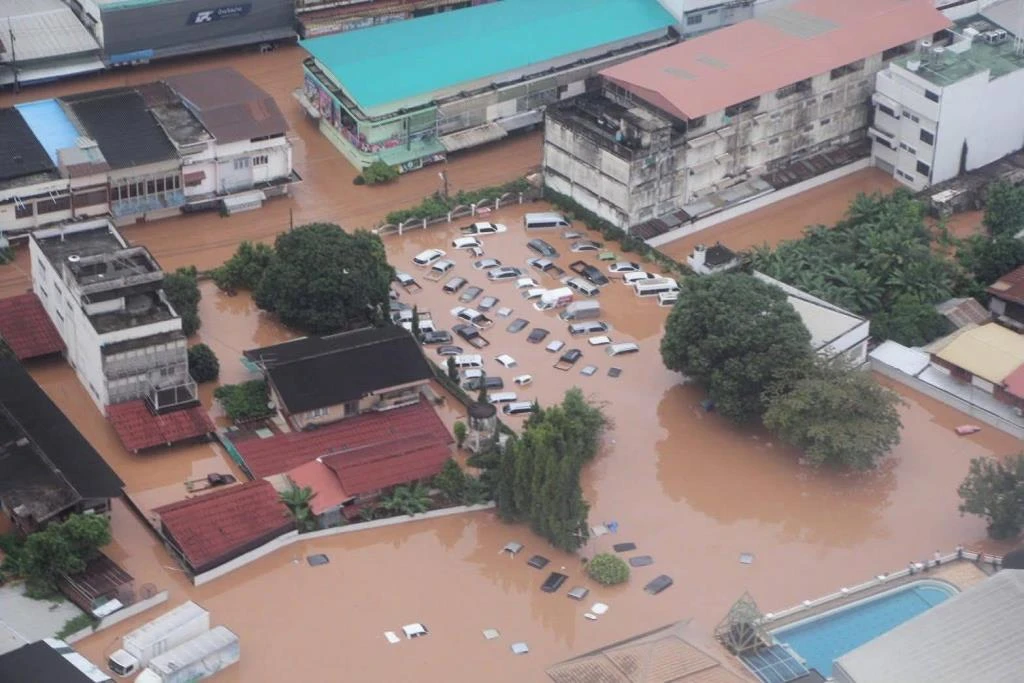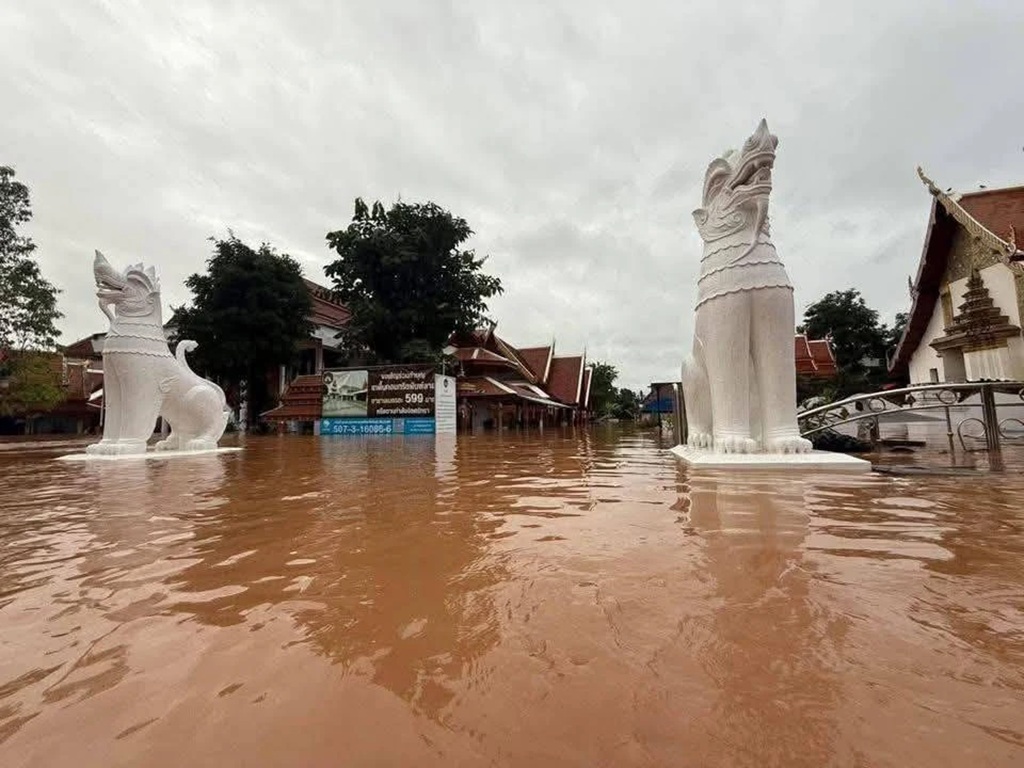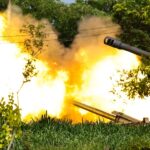NAN – The Governor of the Northern Province of Nan Province told a press briefing that the province is facing its most severe flooding on record. While floodwaters have started to recede, the drop has been steady but slow, at only about 10 centimetres per hour.
The main economic area remains submerged under more than a metre of water. Nan Hospital is still closed, with water levels there still above 90 centimetres. Many communities along the Nan Province River have been underwater for over three days, with several areas yet to receive help. Thousands of families have been affected in Nan Province.
As of July 25, the flood situation in Nan Province’s municipal area and surrounding locations remains concerning. The water is gradually going down, but not quickly enough, averaging 10 centimetres per hour. Water at Nan Hospital now stands at about 90 centimetres, still too high for regular operations.
Communities near the Nan River, especially in Tha Wang Pha district, Sri Phum subdistrict, Ban Sop Nong and Ban Don Tan, have water between 1 and 1.5 metres deep. More than 500 households in these spots are waiting for assistance.
Within the town, neighbourhoods like Ban Phra Kerd, Tha Chang, and Muang Len still have high water. Daily life has become tough for many people, as both tap water and electricity remain cut off. Food and clean drinking water have been in short supply for three days.
In the city’s economic zone, water remains above 1 metre, preventing many residents from checking on their homes and belongings.
Mr. Surapol Thiansut, Mayor of Nan, shared that local authorities have received continuous support from both government and private groups. Special attention is being paid to moving patients and medical staff out of Nan Hospital, identified as a crisis area.
The 3rd Development Division from Phitsanulok sent 13 personnel and five flat-bottom boats to help. Three more boats were added from the Disaster Relief Centre of the 35th Military District and Uttaradit’s Pichai Daobhak Hospital, boosting the rescue mission.
Mayor Surapol urged those in safe homes to stay put until help arrives since some places remain unreachable.
Government agencies, the private sector, and volunteers are working together to prepare and distribute food to those impacted. Wat Pa Nanthaburi Yan Sangwararam and Wat Phra That Chae Haeng temples have set up temporary shelters and cooking spaces, and have donated rice, dried food, seasonings, and other essentials to local committees for continuous meal prep for flood victims.
This year’s flooding in Nan is the most damaging in the province’s history. Residents say they have never seen water levels and destruction like this. The disaster is blamed on the strong impact of Tropical Storm Wipha.
The flooding in Nan town, usually knee-deep each year at about 30 to 40 centimetres, now reaches chest height in places. The governor used a helicopter to survey the extent and found nearly all areas underwater, though floodwaters coming from the north are starting to drop.
Authorities expect the situation to improve within two days. Roads such as the Nan-Tha Wang Pha route are now passable.
Governor Chainarong Wongyai flew with the Department of Disaster Prevention and Mitigation to survey the floods, bringing food, drinks, and medicine in waterproof packs for hard-to-reach places like Ban Don Sri Saem. Aerial views showed the entire town and its surroundings submerged.
The Royal Irrigation Department in Nan Province reported that the water at the N1 Northern Development Bridge has held steady at 9.49 metres for over three hours and is starting to decrease. Water levels at Ban Pha Khwang (N64) have been dropping since the morning of July 24, with expectations that Nan town and other districts will see water return to normal within two days.
Reporters noted that several roads in Nan Province still have standing water, though this is slowly easing. Annual floods in Nan’s centre typically reach knee height, but this year’s severity surprised locals and forced many to evacuate.




